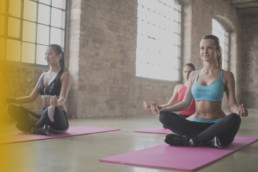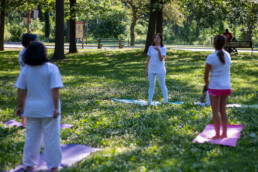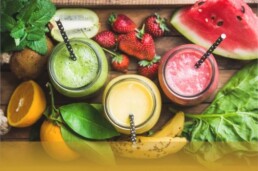Pages
“Exercise was an honour among the ancients. Yoga, and Judo, in their origins, are two complete systems, two transcendental philosophies, with their technical aspects and practical applications.”
– S.R. de la Ferriere
Based on the 84 asanas of the Yoghi tradition, the Ferriz-Ferriere Yoga Method was devised and created for the general public as an indispensable discipline with active asanas in combination with movements predominantly found in the West.

It has become one of the most basic techniques of permanently improving our physical, emotional and mental health. It is truly an unsurpassed discipline. The effects of these exercises can be felt throughout the whole body. It has been recommended by education and health institutions, humanitarians, doctors, educators and corporations because of the improvements seen in it’s practitioners’ psychosomatic functions, psychomotor reactions, balanced emotions, and energy levels.
Its benefits (physical, emotional, mental and spiritual) can be felt in very little time, leading to a harmony with our surroundings. Due to its softer nature everyone can practice these exercises.
Benefits
-
Improves memory and concentration
-
Helps to calm and relax the mind and the body, combating anxiety and providing serenity
-
Brings harmony to glandular functions
-
Vitalizes the nervous system
-
Prevents arthritis and osteoarthritis
-
Improves blood circulation
-
Effectively works against obesity and spinal ankylosis
-
Helps to improve cardiovascular health
-
Helps to overcome respiratory deficiencies
-
Improves the flexibility of muscles, ligaments and tendons
-
Corrects bad postural habits, providing a slim figure
-
Oxygenates, cleanses and increases pulmonary circulation
-
Prolongates youth by improving flexibility in the spine
-
Prevents gastrointestinal disorders by improving digestive function
Naturally, there are many elements in the Yoga system. The discipline of exercises falls under 8 basic elements. These steps are said in the Yoga tradition to be necessary in order to rise above the animal condition. Many of these steps have arisen and evolved within different societies and cultures, and Yoga specifies these 8 steps (or “angas”) as:
1. Yama – Abstinences
2. Niyama – Rules of life
3. Asanas – positions of the body
4. Pranayama – the control of one’s breathing
5. Pratyahara – the control of one’s senses (**not the suppression**)
6. Dharana – Meditation
7. Dhyana – Concentration
8. Samadhi – Identification
The Ferriz-Ferriere Yoga Method would fall under the Asanas (positions of the body) and more specifically be a form of Grathasta Yoga (physical exercises). As can be seen, the positions of one’s body receives greater benefits when accompanied by the first two steps (vegetarianism for example), and is more profoundly complimented by greater research and knowledge.
Jnana Yoga (the Path of Knowledge)
JNANA – YOGA is the path of knowledge, work and study. Since ancient times, the Upanishads proclaimed the superiority of this Way. It is concerned with a life based on rational study, on the Scriptures, on Science, etc.
It is said that it is the Way by virtue in which the avarana (veil of ignorance) is found to be far from the Yoghi and it is constituted by BHUMIS (planes):
The 7 Bhumis of Jnana Yoga are:
1. Subha-Iccha – Good Will
2. Vicharana – Reflextion
3. Tanu-Manasa – Spirit Subtlety
4. Sattwa- Apatti – The Perception of Reality
5. Asansakti – The Disappearance of Worldly Attractions
6. Padartha Abhavani – The Disappearance of Visible Forms
7. Turyaga – The Non-Manifested
The way of knowledge (Jnanakanda) asked for labours that the majority of people were incapable of fulfilling at the time and the Wisdom of the Old School was a virtue by which the layman had much difficulties in reaching. It is because of this that the majority had to solely reduce to Faith.
Mind-Body Yoga
“Exercise was an honour among the ancients. Yoga, and Judo, in their origins, are two complete systems, two transcendental philosophies, with their technical aspects and practical applications.”
– Dr. Serge Raynaud de la Ferrière
This method was created for the general public by Dr. Serge Raynaud de la Ferrière for greater public accessibility and to more easily incorporate these exercises as part of one of many disciplines within the Yoghi tradition.
The positive effects of these exercises can be immediately felt by participants. It has been recommended by education and health institutions, humanitarians, doctors, educators and organizations because of the improvements seen in it’s practitioners’ psychosomatic functions, psychomotor reactions, balanced emotions, and energy levels.
Practicing these exercises, especially in a collective space, is meant to produce greater harmony in our physical, emotional, mental and spiritual bodies. Because the asanas are active, as oppose to static positions, there is less chances of pulling muscles and can be accommodated and accessible for all ages and ability types
Benefits
-
Improves memory and concentration
-
Helps to calm and relax the mind and the body, combating anxiety and providing serenity
-
Brings harmony to glandular functions
-
Vitalizes the nervous system
-
Prevents arthritis and osteoarthritis
-
Improves blood circulation
-
Effectively works against obesity and spinal ankylosis
-
Helps to improve cardiovascular health
-
Helps to overcome respiratory deficiencies
-
Improves the flexibility of muscles, ligaments and tendons
-
Corrects bad postural habits, providing a slim figure
-
Oxygenates, cleanses and increases pulmonary circulation
-
Prolongates youth by improving flexibility in the spine
-
Prevents gastrointestinal disorders by improving digestive function
There are many elements in the Yoga system. The discipline of exercises falls under 8 basic elements. These steps are said in the Yoga tradition to be necessary in order to rise above the animal condition The Yoga tradition outlines these steps to support us evolving beyond our primordial emotions and state of consciousness. In Sanskrit these steps are known as Angas:
1. Yama – Abstinences
2. Niyama – Rules of life
3. Asanas – positions of the body
4. Pranayama – the control of one’s breathing
5. Pratyahara – the control of one’s senses (**not the suppression**)
6. Dharana – Meditation
7. Dhyana – Concentration
8. Samadhi – Identification
The Ferriz-Ferriere Yoga Method would fall under the Asanas (positions of the body) and more specifically be a form of Grathasta Yoga (physical exercises). The positions of one’s body receives greater benefits when accompanied by the first two steps (vegetarianism for example), and is more profoundly complimented when participants are more actively engaged in expanding their knowledge on the subject and on continuing their learning journey in attempting to uncover the many truths in our societies in general.
Jnana Yoga (the Path of Knowledge)
JNANA – YOGA is the path of knowledge, work and study. Since ancient times, the Upanishads proclaimed the superiority of this Way. It is concerned with a life based on rational study, on the scriptures and sacred ancient texts, on science, the arts and philosophy. It is an approach that stems from following systematic research methods and ancient disciplines on the path to greater mental and spiritual awakening.
The avarana (veil of ignorance) is therefore very far from the Yoghi
Within this tradition, BHUMIS (planes) are states of consciousness:
The 7 Bhumis of Jnana Yoga are:
1. Subha-Iccha – Good Will
2. Vicharana – Reflextion
3. Tanu-Manasa – Spirit Subtlety
4. Sattwa- Apatti – The Perception of Reality
5. Asansakti – The Disappearance of Worldly Attractions
6. Padartha Abhavani – The Disappearance of Visible Forms
7. Turyaga – The Non-Manifested
Although the path of Faith and Hatha Yoga is one of many paths in the Yoga system, the way of knowledge (Jnanakanda) is an intellectual and comprehensive path that asks for great strength of character and is meant to integrate all Yoga paths. A practitioner or student practicing Jnana Yoga would for example also integrate Karma Yoga in their daily praxis, which is the Yoga or science of action. Ghandi is one of the most publicly known practitioners of this path, which views experiences and the actual effort in the act to positive change as the primary path to spiritual enlightenment.
Children Workshop
We offer a variety of workshops, currently focused on three main concepts: the environment, food and nutrition. Through these main concepts, we develop ideas, food science experiments and creative art reflections and presentations. We use scientific research methods as means to actively build stronger relationships with our surroundings, whether is be with the people that the children engage with on a daily basis, or the situations that they face in life. Our workshops a geared towards promoting higher neuro-plasticity, finding creative ways to collectively transmit what they have learned to their community.
We also give children a short yoga session to help them relax and concentrate better. In addition we provide light snacks at the end of each workshop.Workshops are currently being held in Toronto and Oakville.


Naturlandia
“Let thy food be thy medicine”– Hippocrates
“The vegetarian diet, fermentative and non-putrefactive, has indeed been followed, disseminated and proclaimed, but the cultural realm has not been followed but from a minority” – Dr. David Juan Ferriz Olivares.
Grain Bowls and Salads
Foods of the World Grain Bowl $10
(Quinoa, baby kale, cherry tomatoes, cucumbers, pumpkin seeds, cashew cream sauce)
North to South Salad (gluten free) $10
(Avocado, Red beans, corn, cherry tomatoes, baby kale, sweet peppers, creamy lemon avocado sauce)
Sandwiches
Grilled Cheese $5
(vegan or dairy cheese option)
Pesto Grilled Cheese $6
(vegan or dairy cheese option)
Andean Sandwich $8
(Baby kale, dairy/vegan cheese, tomato, avocado, black olives, pesto)
Smoothies
Protein Tropical Thickie $9.50
(Frozen Pineapple, Dragon Fruit, Passion Fruit, Mango, Banana, Coconut/Dairy Yogurt, Vegan or Whey protein powder)
Smooth Chocosol Almond $7
(Chocosol cinnamon chocolate, Almond Butter, Soy Milk,
Cold-Pressed Juices
Sweet Beet $11
(Beet, Carrot, Apple, Ginger)
Carrot Pineapple Twist $11
(Carrot, Pineapple, Ginger)
Cool Immunity $11
(Celery, Apple, Cucumber, Lemons, ginger)
Freshly Squeezed Orange Juice
Organic $6
Regular $5
“vegetarianism […] corresponds to three planes, in which all problems should be considered: the material or physical Plane, which can be examined in light of official science; the ideal or astral Plane, which constitutes, so to say, the sentimental aspect; and then the purely spiritual or Divine nature Plane, the Superior Reasons, which at the same time represents synthesis.”

Volunteer

Lifestyle
If you’re not sure how much time you are actually spending on various tasks, use a tool like Rescue Time (their free version is excellent!) which runs in the background and tracks where your time is being spent. It can even send you weekly reports so you know exactly how much time you wasted on Facebook, or spent in your email inbox! You can assign different websites or programs/applications on a scale of very distracting to very productive, so you can see at a glance things like: which days of the week you’re most productive, which times of the day you’re most productive, and the sites on which you’re spending the most distracting time. I stumbled upon the concept of margin while reading a post by Michael Hyatt, which led me to design my ideal week.
Richard Swenson, M.D. (who wrote the book: Margin: Restoring Emotional, Physical, Financial, and Time Reserves to Overloaded Lives) describes margin like this:
Last year I wrote about why booking too far in advance can be dangerous for your business, and this concept of margin so eloquently captures what I had recognized had been my problem: I was so booked up with clients that I wasn’t leaving any margin for error, growth, planning, or reflection. I wasn’t really growing my business in a sustainable way; I was just booking one client after the next. At the time this seemed like a good thing: doesn’t growing my business mean getting more clients?
What if instead of booking up to 100% capacity (which more often than not ends up being closer to 120%), we only booked up to an 80% capacity?
What if we left more room for growth (personal or professional) and stopped being one with “busy-ness”?
I spent nearly a year turning down every new project (and even getting rid of old ones) so that I could reduce my workload, build in more margin, and create what is now Digital Strategy School. It takes time to build margin into your schedule.
What could you accomplish with 20% more time?
Write a book. Create a program. Update your contracts and proposals (which has been on your to-do list for how long..?) Spend more time with your family. Go above and beyond for a client. Learn something new. Actually follow through on the things that have been nagging at you for a long time.
When you design your ideal week, you start to see that the time you think you have is often not in alignment with how much time you actually have.
After designing my ideal week, I had a much clearer idea of how to create a framework for my week that would empower me to feel more focused by theming days of the week, and even parts of the day. SO simple, I know. Some of you have been doing this for ages and you’re already a pro, and some of you who saw my schedule said “woah, that’s so rigid, I need more flexibility!”
Structure enables flexibility.
If you’re not sure how much time you are actually spending on various tasks, use a tool like Rescue Time (their free version is excellent!) which runs in the background and tracks where your time is being spent. It can even send you weekly reports so you know exactly how much time you wasted on Facebook, or spent in your email inbox! You can assign different websites or programs/applications on a scale of very distracting to very productive, so you can see at a glance things like: which days of the week you’re most productive, which times of the day you’re most productive, and the sites on which you’re spending the most distracting time. Turns out I’m consistently “in the zone” around 3pm in the afternoon; so instead of trying to tackle highly creative work first thing in the morning (when my brain is barely functioning), I handle it in the afternoon, when I know I’m at my peak!
Creating more margin has been game-changing for my business.
What would be possible for yours?





